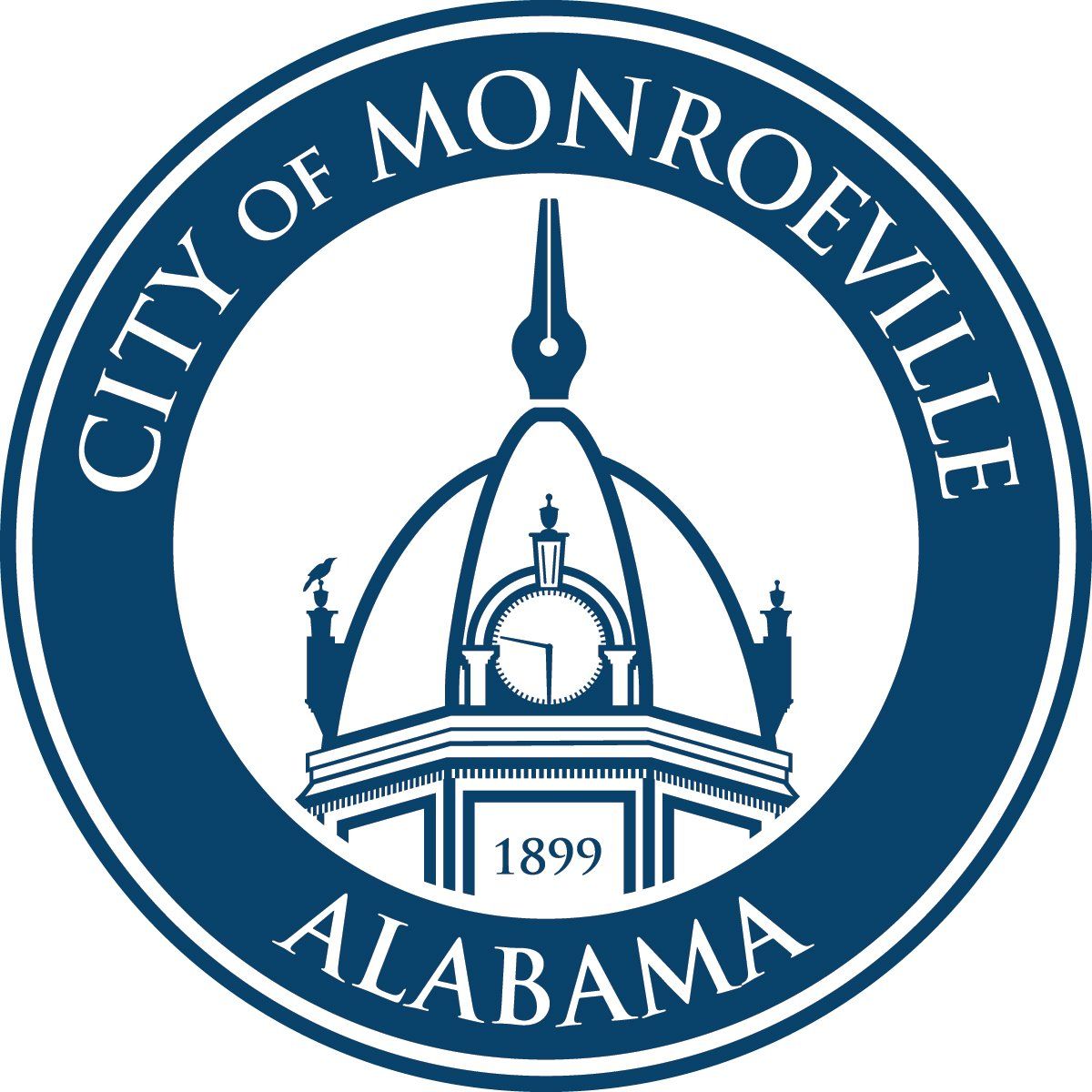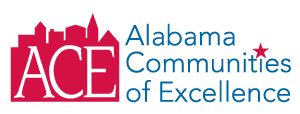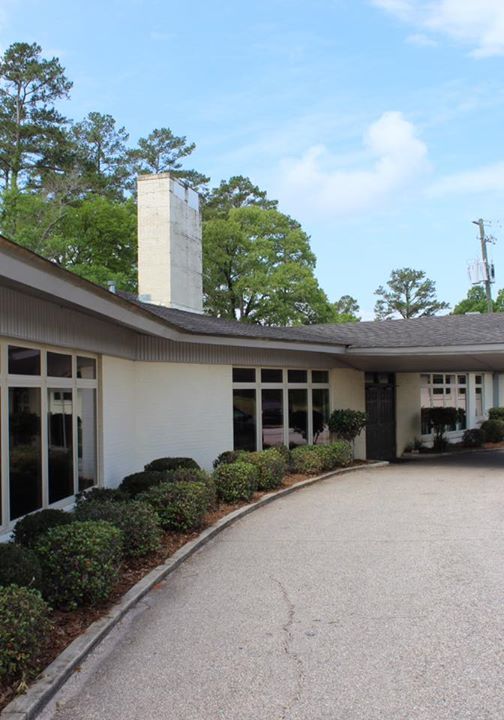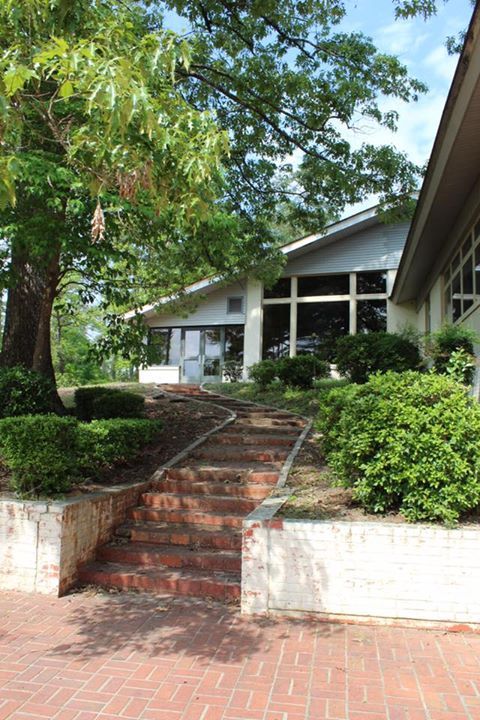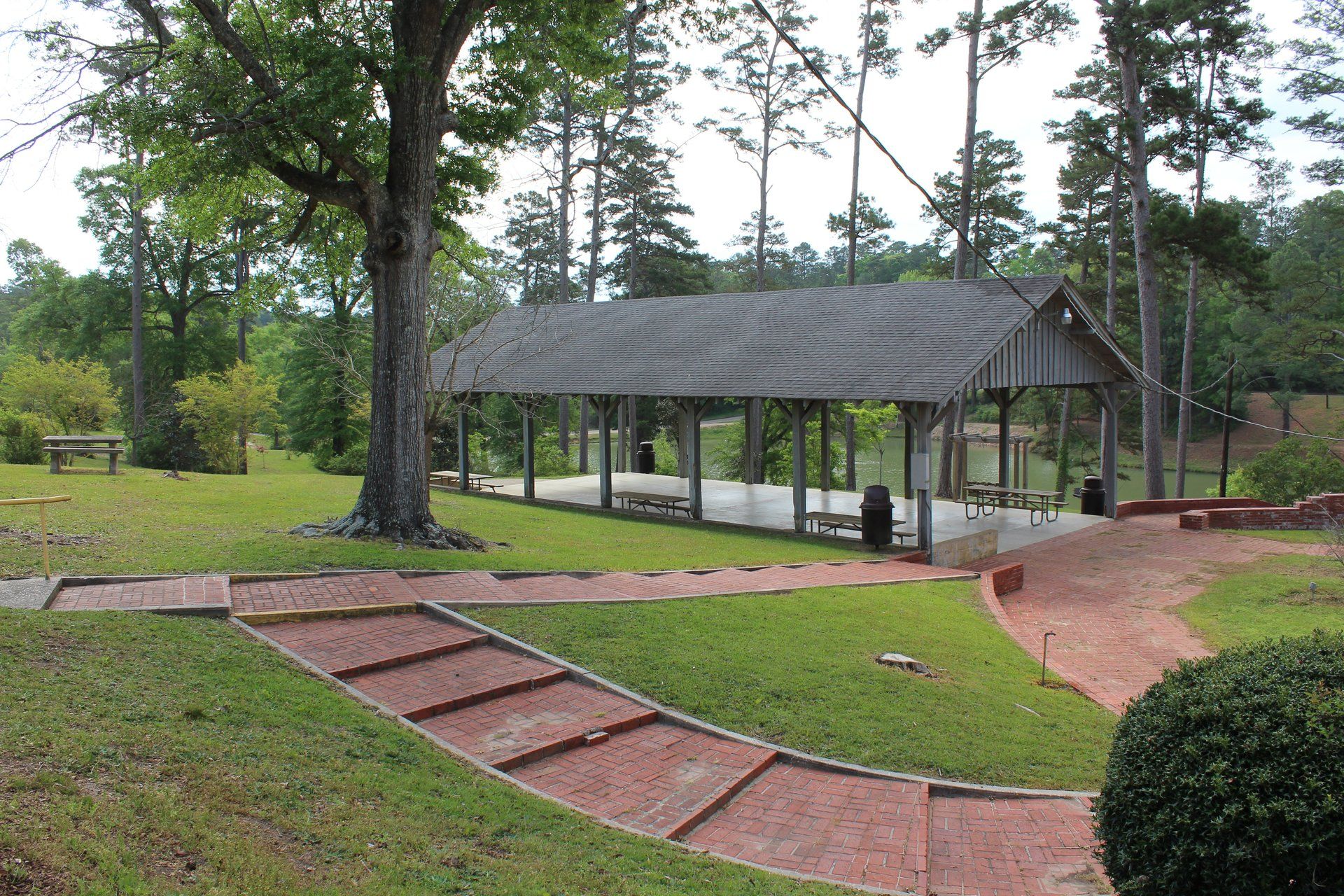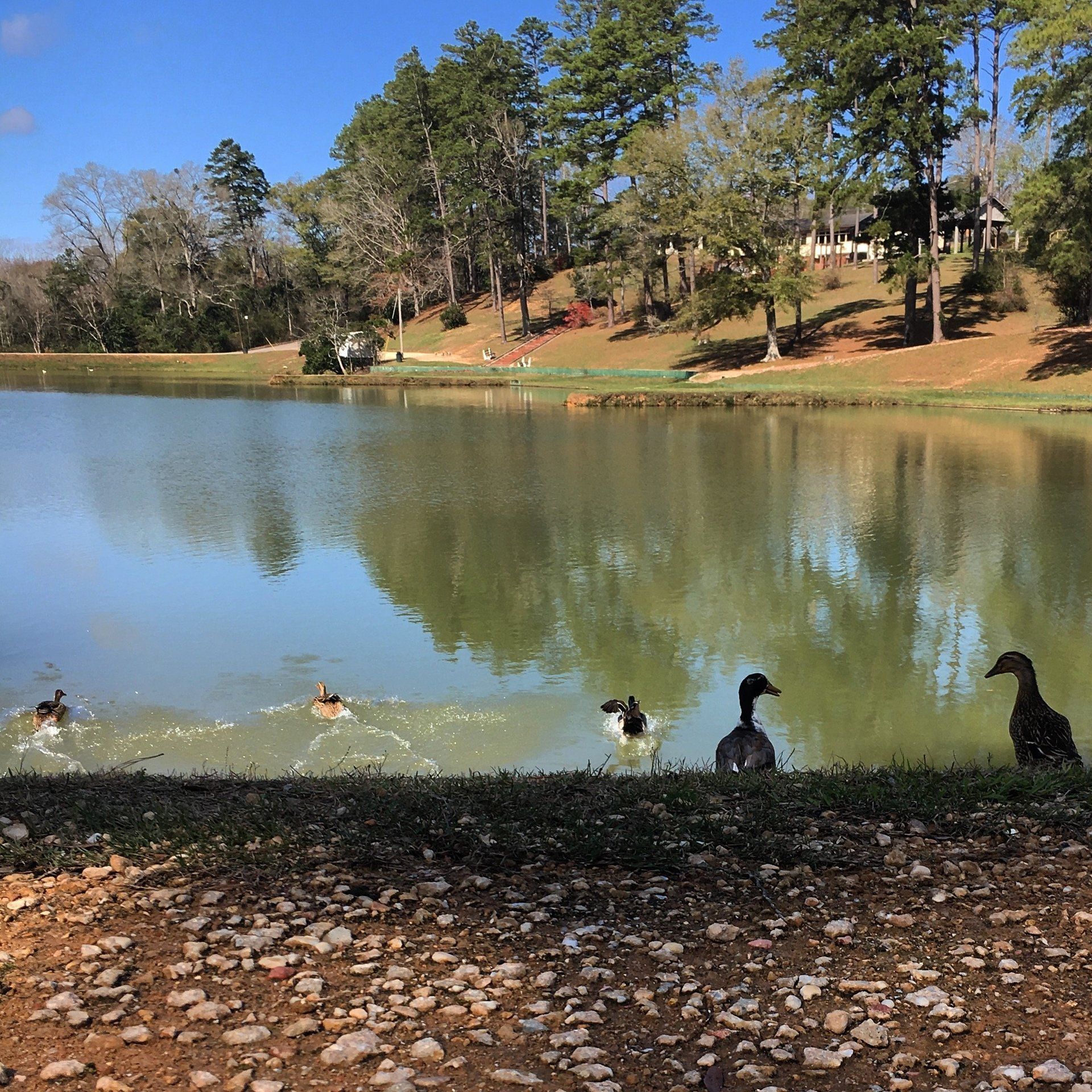ACE Community
In May 2005, Monroeville received the designation as an Alabama Community of Excellence which recognizes the City as one of the top places to live in Alabama. In order to receive this designation, the city was required to meet certain criteria in leadership, planning, economic development and quality of life.
The City of Monroeville provides a bi-annual report to the Alabama Community of Excellence
program and still maintains its designation as a Community of Excellence.
Definition of an ACE Community: Communities in the ACE program strive to meet the following ideals:
LEADERSHIP
COMMUNITY LEADERSHIP AND ENGAGEMENT
The community has many dedicated, diverse, and energetic leaders.
The private sector, community and civic organizations, and faith-based organizations are consistently involved in local initiatives and projects.
The community has an active civic life with multiple opportunities for citizen involvement (i.e., town meetings, deliberative forums, concerts, festivals, community improvement projects).
Local government leaders are committed to strengthening community partnerships and engaging citizens, especially for the planning and implementation of economic and community development initiatives.
Elected officials maintain good working relations and seek to constructively resolve differences.
Local government leaders build bridges and alliances with other jurisdictions and organizations to encourage economic development in the region.
City and county governments are committed to the training and professional development of local government officials and staff.
City and county governments are committed to the training and professional development of local government officials and staff.
LEADERSHIP DEVELOPMENT
The community/county has a formal, active leadership development program.
Local government, the Chamber of Commerce, the business community and civic groups actively support the program and encourage employee participation.
There are adequate funds and staff to plan and conduct the program.
Program participants should represent the diversity of the community (Aim for diversity of gender, age, ethnicity, and socioeconomic status based on census demographics).
The curriculum includes instruction on basic leadership skills/strategies (i.e., planning, problem-solving, teamwork, interpersonal skills, conflict management, valuing diversity, etc.).
The curriculum adequately addresses economic development, community development, and community planning and design topics.
The program format is interactive, participatory, and innovative (i.e., not simply lectures and presentations).
The program has a youth leadership component.
The program provides the opportunity for real-world applications — connecting participants with community improvement plans or projects.
The program provides opportunities for alumni leadership and participation in community projects
PLANNING VISION AND STRATEGIC PLANNING
The community has an up-to-date strategic plan that provides a compelling vision for the future along with specific strategies for realizing that vision.
A large, diverse group of leaders and stakeholders representing a broad cross-section of the community participated in the process and support the plan (Aim for diversity of gender, age, ethnicity, and socioeconomic status based on census demographics.).
A detailed action plan specifies how the plan’s goals and objectives will be implemented in the community (i.e., who will be involved, the time frame for accomplishment, needed resources, key milestones/benchmarks, and the expected results or product); and
A mechanism for annual review and revision is incorporated into the plan – both to evaluate accomplishment and to correct implementation problems.
COMPREHENSIVE PLANNING
The community has an up-to-date comprehensive land use plan that includes policies and strategies for land use, transportation, housing, community facilities, and resource conservation.
The community has specific plans for zoning, development regulation, and design/appearance review that are actively enforced.
All planning initiatives are consistent with community design standards and goals.
ECONOMIC DEVELOPMENT STRATEGY
The community has an up-to-date, comprehensive economic development plan (either separately or as part of the strategic plan). The plan addresses business retention, expansion and recruitment; commercial, retail and small business development; and tourism and retiree attraction.
The plan identifies and prioritizes the areas of development that best fit local needs and wants.
The economic development plan includes an analysis of the local economy—identifying strengths, potential opportunities, and the types of businesses that best fit the community.
The plan is fully supported by community leaders involved with economic development.
INFRASTRUCTURE
Local infrastructure (electricity, natural gas, water and sewer, rail, etc.) is adequate to support the selected business targets.
The community is connected to the global economy through high-speed Internet.
The community has a quality site that is suitable for desired business targets, free of easements and/or encumbrances, and available at a fair market price.
ORGANIZATIONAL STRUCTURE
The community (or county) has an economic development or industrial development authority/board/individual responsible for business recruitment.
A single point of contact is identified/designated for all economic development activities.
The organization has a structured and trained prospect sales team.
The staff (or officers) of the development organization regularly participates in state professional association activities.
INFORMATION AND MARKETING
The economic development organization maintains current, relevant information about the community and can produce quality promotional information easily.
Available properties are monitored, maintained, and listed in the Economic Development Partnership of Alabama (EDPA) database, and updated regularly.
The organization/individual effectively markets the community to appropriate businesses targets and maintains regular contact with state officials and other economic development professionals.
The community/county hosts a website on the Internet with information appropriate to its targets.
EXISTING BUSINESS PROGRAM
The community has a formal and ongoing business retention and expansion program that includes:
Regular visits to business owners and managers,
A process for addressing problems identified by industry leaders,
An annual industrial and commercial recognition event,
A survey of labor wages and fringe benefits, and
Workforce education and training programs.
COMMERCIAL/RETAIL BUSINESS DEVELOPMENT AND TOURISM
The community/county has an active Chamber of Commerce or Business Alliance with at least a paid part-time executive.
The community maintains a comprehensive inventory of retail, commercial, and service properties, including spaces that formerly housed retail or commercial entities and those with that potential.
The historic commercial core is maintained and provides an area for community and tourism events.
QUALITY OF LIFE AMENITIES AND AESTHETICS
The community supports a variety of amenities that contribute to enhanced quality of life (i.e., arts, entertainment, and recreation). Examples include:
Support local theater, museum and/or arts exhibit spaces for community events
Hold Local Heritage and Arts Festivals, and
Provide arts and cultural programs including classes, tours and exhibits
Public property and buildings are well maintained.
Parks and recreation facilities are well maintained, widely available, and suitable to meet the needs of the community.
Greenways, blue-ways, and multi-use trails (such as hiking, biking, walking, and pedestrian trails) are available as appropriate to meet the community’s needs.
Gateways at city entrances, general landscaping, and way-finding/signage are well maintained attractive.
The community supports downtown enhancements and preservation of historic neighborhoods and buildings with local incentives and/or regulations.
Historic properties are listed on the Alabama Register of Landmarks or Heritage and/or on the National Register of Historic Places.
EDUCATION/WORK FORCE/SCHOOL SYSTEM
All schools in the community consistently achieve “academically clear” status with student standardized test scores at or above the state average.
There is a clear commitment to continuous improvement within the community and its schools.
Effectively utilizes technology and distance learning options to keep learning opportunities relevant.
Adult literacy programs are available in the community.
Career/Technical Education counseling and programs are offered in the community.
Schools/school system meets the following expectations
Has Southern Association of Colleges and Schools (SACS) accreditation,
Offers multiple avenues and formal programs for meaningful parental involvement in the school and regularly solicits input prior to decision making,
Participates in formal partnerships with local businesses, community agencies, and institutions of higher education,
Participates in the Alabama Reading Initiative, Summer Learning Challenges, or similar programs,
Participates in the Alabama Science, Math, and Technology Initiative, or other enhanced mathematics and science programs,
Provides extended-day/out-of-school-time programs,
Provides professional development for principals and superintendent,
Provides quality pre-kindergarten programs,
Offers quality professional development opportunities (in addition to the state appropriated professional development days) for teachers and staff, and
Offers appropriate curriculum for migrant populations that includes “English as a Second Language” (if applicable).
HEALTHCARE
Primary care, dental, pharmacy, and mental health services are available to all age groups.
The community utilizes telemedicine to expand healthcare in areas with limited access to physicians.
The community has ready access to a hospital that provides an array of vital services, including emergency transport services and a 24-hour emergency room.
The community has access to long-term care (i.e., nursing home/assisted living facility, Senior Center) and home health services.
The community promotes wellness and prevention programs (i.e., health education, recreation and physical fitness, and farmers markets and community gardens).
The community’s healthcare leadership is committed to planning for future healthcare services and needs (i.e., recruitment and retention of health care providers and professionals, workforce development, and the development of strategies for funding healthy initiatives).
Public buildings are designated smoke-free environments.
PUBLIC SAFETY/ EMERGENCY SERVICES
Leadership recognizes the importance of public safety and emergency services to maintaining quality of life for the community.
The community is actively involved and participates with the County Emergency Management Agency (EMA) in regards to disaster preparedness/natural hazard mitigation plans.
The community has adopted a natural hazard mitigation plan.
The fire and police departments are adequately staffed, trained, and equipped to serve the community.
The community and fire department work to ensure that the Insurance Service Office (ISO) rating, which determines insurance rates for residents and businesses, is the lowest feasible.
Emergency medical and ambulance services are available to all members of the community.
The community has low crime rate statistics (property and violent crimes).
The community has good response times for fire, police, emergency medical, and ambulance services.
